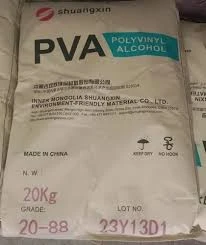The Role of Cellulose Binder in Various Applications
Cellulose binders have emerged as indispensable components in a variety of industries, particularly in the realms of pharmaceuticals, food, and materials science. Derived from plant fibers, cellulose is a natural polymer that provides functionality and stability in formulations. This article explores the significance of cellulose binders, their properties, applications, and the advantages they offer.
Properties of Cellulose Binders
Cellulose binders are characterized by their excellent binding properties, compatibility with other ingredients, and non-toxic nature. They offer superior adhesive strength, ensuring that formulations maintain their integrity during processing and storage. Being water-soluble, cellulose binders can be easily incorporated into various systems, including solutions, emulsions, and suspensions. Their biodegradable nature aligns with modern sustainability goals, making them a viable choice for eco-conscious industries.
Applications in Pharmaceuticals
In the pharmaceutical industry, cellulose binders play a crucial role in tablet formulation. They are used to facilitate the granulation process, where powdered ingredients are agglomerated into granules to enhance flowability and compressibility. Common cellulose binders include Hydroxypropyl Methylcellulose (HPMC) and Microcrystalline Cellulose (MCC). These binders ensure that active pharmaceutical ingredients (API) are evenly distributed within the matrix, which is essential for consistent dosing.
Moreover, cellulose binders also contribute to the release profile of the medication. For instance, they can be formulated into controlled-release systems, allowing for a gradual release of the drug into the bloodstream. This capability is particularly beneficial for medications requiring sustained therapeutic effects.
Role in Food Products
In the food industry, cellulose binders are utilized as stabilizers, thickeners, and emulsifiers. They enhance the texture, consistency, and mouthfeel of products such as sauces, dressings, and baked goods. Cellulose binders can also extend the shelf life of food items by improving moisture retention and preventing separation in emulsified products.
The acceptance of natural ingredients by consumers has propelled the use of cellulose binders as alternatives to synthetic additives. For instance, they serve as gluten substitutes in gluten-free baking, providing the necessary structure and elasticity. This adaptability makes cellulose an attractive ingredient for manufacturers aiming to produce healthier and cleaner label products.
cellulose binder

Applications in Materials Science
Beyond food and pharmaceuticals, cellulose binders are increasingly finding applications in materials science. They are used in the production of composites, ceramics, and coatings. In construction materials, cellulose binders can enhance the mechanical properties of cement and concrete, contributing to improved durability and strength. The renewable nature of cellulose also aligns with sustainability trends within the construction industry.
In the electronics sector, cellulose binders are employed in the manufacture of batteries and capacitors. Their ability to form stable and conductive films can significantly influence the performance and efficiency of these devices. This innovation reflects the growing interest in sustainable materials in high-tech applications.
Advantages of Cellulose Binders
The widespread adoption of cellulose binders can be attributed to their numerous advantages. Firstly, their natural origin makes them appealing in a world increasingly focused on sustainability. They reduce reliance on synthetic polymers, many of which have been associated with environmental concerns.
Secondly, cellulose binders are versatile. They can be employed in various formulations across a wide range of industries, showcasing their adaptability to different needs and applications. Additionally, their inherent safety profile ensures they can be used in food and pharmaceutical products with minimal risk.
Finally, cellulose binders can enhance the overall performance of formulations. By strengthening structural integrity, improving texture, and optimizing the release of active ingredients, they contribute to higher-quality products, which can lead to increased consumer satisfaction.
Conclusion
In conclusion, cellulose binders serve as a crucial ingredient across diverse applications, from pharmaceuticals and food products to materials science. Their unique properties and numerous advantages make them a preferred choice in an era where sustainability and performance are paramount. As technology advances and the demand for eco-friendly solutions grows, the significance of cellulose binders will undoubtedly increase, paving the way for innovative applications and improved product performance. The future holds promise for further exploration and development of cellulose-based formulations that meet the needs of modern industries while prioritizing environmental considerations.
-
The Application and Significance of Construction RdpNewsMay.19,2025
-
Industrial Grade HpmcNewsMay.19,2025
-
Building Coating Adhesive Building Coating Adhesive HpmcNewsMay.19,2025
-
Application Of Hpmc For Detergent For Detergent In DetergentsNewsMay.19,2025
-
Application Of Hpmc Cellulose In Cement-Based MaterialsNewsMay.19,2025
-
Application Of High Quality Hpmc For Construction In The Field Of ConstructionNewsMay.19,2025




